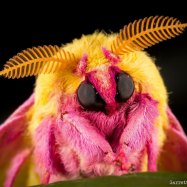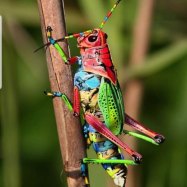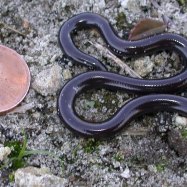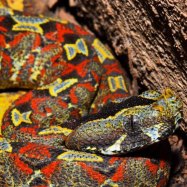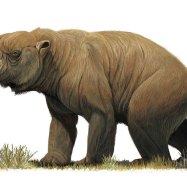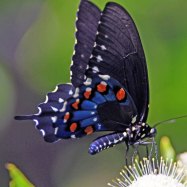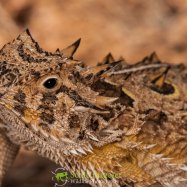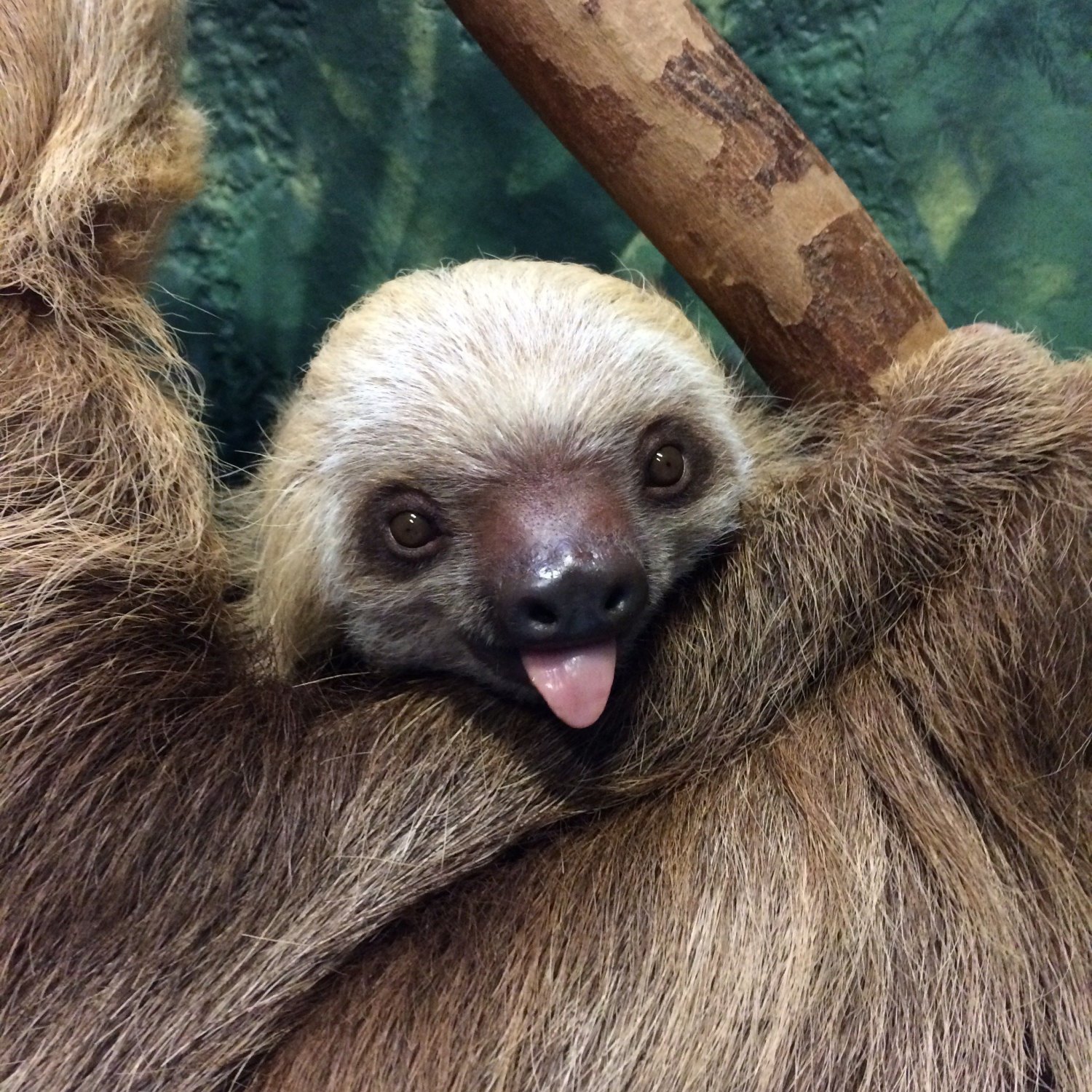
Sloth
50-60 cm (19.5-23.5 inches)
Sloths are fascinating animals found in the canopy of trees in the rainforests of South and Central America. With an average length of 50-60 cm, they have a small, stocky body and long limbs that help them move slowly and effortlessly through the trees. Belonging to the family Bradypodidae, these creatures are known for their slow-paced lifestyle and unique body shape. Learn more about these amazing animals and their habitats in the rainforests!
Animal Details Summary:
Common Name: Sloth
Kingdom: Animalia
Habitat: Tropical rainforests
The Slow and Steady Sloth: A Fascinating Creature of the Rainforest
The sloth, with its slow movement and sluggish nature, may seem like an uneventful animal to many. But for those who have had the chance to observe these creatures in their natural habitat, they know that there is so much more to these animals than meets the eye. With their unique physical features and distinct behaviors, the sloths are a fascinating species that captures the hearts of many. In this article, we will delve deeper into the world of sloths, learning about their scientific background, habitat, behavior, and more Sloth.Scientifically known as the Bradypus, the sloth belongs to the animal kingdom, with its Chordata phylum and Mammalia class. It falls under the order of Pilosa and the Bradypodidae family. There are six known species of sloths, namely the brown-throated sloth, the pale-throated sloth, the maned sloth, the pygmy three-toed sloth, and the most well-known species, the three-toed and two-toed sloths. All sloths can be found in the tropical rainforests of Central and South America, in countries like Panama, Costa Rica, Brazil, and others.
The sloths have evolved perfectly to live in the tropical climate of the rainforest. Their slow movements and sedentary lifestyle allow them to conserve energy, while their thick fur provides insulation and protection from the elements. Sloths are also equipped with sharp claws and a powerful grip, making it easier for them to move around in the canopy of trees where they reside.
Unlike most animals, sloths have a unique feeding method. They are herbivorous, and their diet mainly consists of leaves, shoots, and fruits Snapping Turtle. However, finding food in the dense rainforest can be challenging, and sloths may go days without eating, further adding to their slow nature. This is why sloths have a multichambered stomach and the slowest metabolic rate of any mammal, making it possible for them to survive on a low-calorie diet for extended periods.
The geographical distribution of sloths is primarily concentrated in Central and South America, with each species having a specific range. The brown-throated sloth is found in Central America, while the pale-throated sloth can be seen mainly in northern South America. The maned sloth is only found in Brazil, and the pygmy sloth is endemic to a small island off the coast of Panama. The two most common species, the three-toed and two-toed sloths, are found in a wider range, from Central America to the Amazon rainforest.
Sloths are primarily tree-dwelling animals, and they rarely come down to the ground. This is because their natural predators, such as jaguars, snakes, and birds of prey, can easily target them on the ground. Sloths have adapted to their arboreal lifestyle with their physical features, such as their long and powerful limbs that allow them to hang upside down, and their curved spine and rotating feet that help them maintain their grip on the branches.
Another interesting feature of the sloths is their coloration. Most sloths have a grayish-brown coat, which helps them blend in with the trees and avoid predator detection. However, due to their slow movements, sloths often find themselves covered in green algae and moss, giving them a patchy appearance. This unique feature not only adds to their camouflage but also provides essential nutrients to their diet, as the algae and moss on their fur act as a supplementary food source.
The sloth's body shape is small and stocky, with a round head and a short tail. The average length of a sloth is around 50-60 cm (19.5-23.5 inches), and they can weigh anywhere from 3.6-7.7 kg (8-17 lbs). These animals have a low muscle mass, making them appear even smaller and giving them a huggable and adorable appearance.
While most people associate sloths with being lazy and slow, they actually have a fascinating and complex behavior. Sloths spend most of their waking hours eating, and they can move only around 30 feet in a day. However, when threatened or disturbed, sloths can move surprisingly quickly, reaching speeds of up to five feet per minute. They also have an acute sense of smell and can detect potential predators using their keen sense of smell.
One of the most unique behaviors of sloths is their symbiotic relationship with moths. Sloths are known to have specialized fur that supports a specific species of moth that lives on their body. These moths feed on the algae and fungi on the sloth's fur and lay their eggs in the sloth's droppings, creating a self-sustaining cycle. This mutually beneficial relationship is just one example of the fascinating adaptations that sloths have developed to survive in the rainforest.
However, sloths are facing several threats in their natural habitat, primarily due to human activities. Deforestation, habitat loss, and the illegal wildlife trade are some of the major challenges that sloths are facing. This is why conservation efforts are crucial in protecting these adorable and fascinating creatures.
Several organizations are working towards protecting sloths and their habitat, implementing programs that promote sustainable living and eco-tourism. In addition, efforts are being made to educate people about the importance of preserving the rainforest and the diverse species that call it home. By supporting these initiatives, we can ensure that the sloth's unique lifestyle and behavior are preserved for future generations to admire and learn from.
In conclusion, sloths are a truly incredible species that deserve more recognition and attention. Despite their slow movement, they are well-adapted to their habitat and have unique behaviors and physical features that make them stand out from other animals. Through conservation efforts and public awareness, we can ensure that sloths continue to thrive in the tropical rainforests of Central and South America. So, the next time you come across a sloth, take a moment to appreciate their fascinating nature and the wonders of the natural world.

Sloth
Animal Details Sloth - Scientific Name: Bradypus
- Category: Animals S
- Scientific Name: Bradypus
- Common Name: Sloth
- Kingdom: Animalia
- Phylum: Chordata
- Class: Mammalia
- Order: Pilosa
- Family: Bradypodidae
- Habitat: Tropical rainforests
- Feeding Method: Herbivorous
- Geographical Distribution: Central and South America
- Country of Origin: Panama, Costa Rica, Brazil, etc.
- Location: Canopy of trees
- Animal Coloration: Grayish-brown with patches of green algae
- Body Shape: Small, stocky body with long limbs
- Length: 50-60 cm (19.5-23.5 inches)
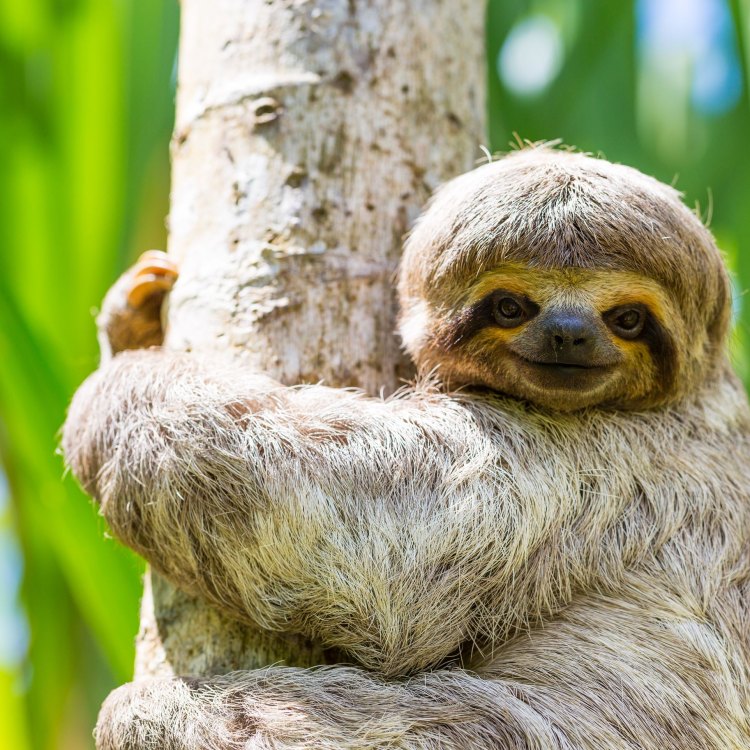
Sloth
- Adult Size: 60-80 cm (23.5-31.5 inches)
- Average Lifespan: 20 years in the wild
- Reproduction: Sexual
- Reproductive Behavior: Solitary
- Sound or Call: Generally silent, occasional high-pitched call
- Migration Pattern: Non-migratory
- Social Groups: Mostly solitary
- Behavior: Mainly active at night (nocturnal)
- Threats: Habitat loss and fragmentation, poaching, and climate change
- Conservation Status: Vulnerable
- Impact on Ecosystem: Play an important role in dispersing seeds
- Human Use: Tourism, pet trade, and traditional medicine
- Distinctive Features: Slow movement and long claws
- Interesting Facts: Sloths spend most of their lives hanging upside down
- Predator: Harpy eagles, jaguars, and anacondas

Bradypus
The Fascinating World of Sloths: Slow-Moving Creatures with a Vital Role in Ecosystems
When you think of animals, you probably imagine fast and agile creatures such as cheetahs or eagles. However, there is one group of mammals that defies this stereotype – sloths. These unique creatures are known for their slow and deliberate movements, making them one of the most interesting animals in the world. In this article, we will take a closer look at these fascinating creatures, their behavior, threats, and the vital role they play in their ecosystems PeaceOfAnimals.Com.Sloths are medium-sized mammals that belong to the order Pilosa, which is divided into two families – two-toed sloths (Choloepus) and three-toed sloths (Bradypus). Despite their name, both types of sloths actually have three toes, but the main difference is in the number of fingers they have – two-toed sloths have two fingers, while three-toed sloths have three fingers. They are found in the tropical forests of Central and South America, with six different species currently recognized. Let’s dive into the world of sloths and explore the unique features and characteristics of these adorable creatures.
Anatomy and Physical Features
One of the most distinctive features of sloths is their slow movements. They are extremely slow-moving creatures, and their top speed has been recorded at just over 12 feet per minute. This slow-moving behavior is due to their anatomy – their muscles and tendons are designed for energy conservation, not movement. Sloths have four times less muscle mass than other similar-sized mammals, which helps them conserve energy and minimize their movements.Adult sloths measure anywhere from 60-80 cm (23 Snow Leopard.5-31.5 inches) from head to tail, with two-toed sloths being slightly larger than three-toed sloths. They have shaggy fur that is often covered in algae, giving them a greenish appearance and acting as camouflage in their natural habitat. The fur of sloths also acts as insulation, keeping them warm in the cooler evenings when they become more active.
Another distinctive feature of sloths is their long claws, which can grow up to four inches in length for some species. These claws are mainly used for hanging onto trees and branches, but they also come in handy for self-defense against predators. Sloths are excellent climbers, thanks to their long claws and strong limbs, which allows them to move around and hang upside down with ease.
Behavior and Social Life
Sloths are mostly solitary animals, although they do have brief interactions during mating. They are generally active at night (nocturnal), spending most of their days sleeping or resting in trees. When they do move, it is typically to search for food or find a new place to rest. Sloths have a very slow metabolism, and it takes them up to a month to digest one meal, making them extremely slow-moving and sleepy creatures.These peaceful animals are generally quiet and make very little noise. However, they do occasionally make a high-pitched call, usually during the mating season to attract mates. Unlike many other animals, sloths do not have a distinct migratory pattern, and they are considered non-migratory animals. Instead, they stay in their designated territory all year round, conserving their energy and minimizing their movements.
Reproduction and Life Cycle
Sloths reach sexual maturity at around three years of age, and their reproductive behavior is solitary. Males will make loud, high-pitched calls to attract females during the breeding season. After mating, females will give birth to one offspring, known as a “choloepus” (two-toed) or a “bradypus” (three-toed). The young will stay with their mothers for up to a year, learning essential skills such as climbing and finding food.Sloths have an average lifespan of 20 years in the wild, but some have been known to live up to 40 years in captivity. Unfortunately, their lifespan is decreasing due to various threats they face in their natural habitat.
Threats and Conservation Status
Sloths are facing several threats, and their population has been declining in recent years. The main threat to their survival is habitat loss and fragmentation. Deforestation, primarily for agricultural purposes, has reduced their habitat significantly, leaving them with limited food sources and making them more vulnerable to predators.Poaching is another significant threat to sloths, as many people value their fur as a commodity. Sloths have also been used in traditional medicine, although this practice is becoming less common. Climate change is also a concern for sloths, as it affects their food sources and can cause changes to their natural habitats, making it challenging for them to adapt.
As a result of these threats, sloths are currently listed as “vulnerable” on the International Union for Conservation of Nature’s (IUCN) Red List. Several organizations and conservationists are working towards raising awareness and implementing measures to protect these unique creatures and their habitats.
Importance in Ecosystems
Although sloths may seem like unassuming creatures, they actually play a crucial role in their ecosystems. As they move around slowly and deliberately, they disperse seeds from the plants and fruits they eat, contributing to forest regeneration. Sloths are also essential pollinators, transferring pollen from one plant to another as they feed.Their slow-moving behavior also acts as a form of camouflage, protecting them from predators. In some cases, sloth fur has even been found to host a variety of insects, which can provide a food source for other animals in their ecosystems. Overall, the loss of sloths can have a significant impact on the delicate balance of their ecosystems.
Human Use and Interaction
Sloths have become popular touristic attractions, with many people seeking out opportunities to see these unique creatures in their natural habitats. While responsible tourism can bring attention and conservation efforts to sloths, it is vital to ensure that their well-being is prioritized, and they are not disturbed or harmed in any way.Sadly, sloths are also victims of the illegal pet trade, as many people see them as cute and cuddly pets. However, sloths do not make good pets as they require specific diets and care that can only be provided in their natural habitats. It is essential to educate people about the negative impacts of keeping wild animals as pets and the importance of conservation efforts.
In traditional medicine, sloths have been used to treat ailments such as rheumatism and epilepsy. However, there is no scientific evidence to support the effectiveness of these treatments. The use of sloths in traditional medicine has decreased in recent years, but it is still a concern in some regions.
Interesting Facts about Sloths
- Sloths spend most of their lives hanging upside down, even sleeping in this position.- They have an extremely slow metabolism, with a low body temperature and low heart rate.
- Sloths only leave their tree branches to defecate, which they do once a week. This behavior is crucial as it avoids detection by predators.
- In some traditions, sloths are seen as spiritual creatures and are believed to possess healing powers.
- Sloths have a unique ecosystem in their fur, housing a variety of insects and algae that help camouflage them and provide a food source for other animals.
Predators
Despite their slow and seemingly defenseless nature, sloths do have predators in their habitats. Harpy eagles, jaguars, and anacondas are the main predators of sloths. These predators are most likely to attack young or weakened sloths, as adults can be quite challenging to catch due to their slow movements and tree-dwelling habitats.In conclusion, sloths may be known for their slow movements, but they are fascinating and important creatures in their ecosystems. These peaceful animals face numerous threats that have caused a decline in their population, and conservation efforts are crucial to ensure their survival. By raising awareness and taking steps to protect their habitats, we can help these unique creatures continue to play their vital role in the delicate ecosystem of tropical forests. So, let’s appreciate the beauty and uniqueness of sloths and work towards preserving their existence for generations to come.
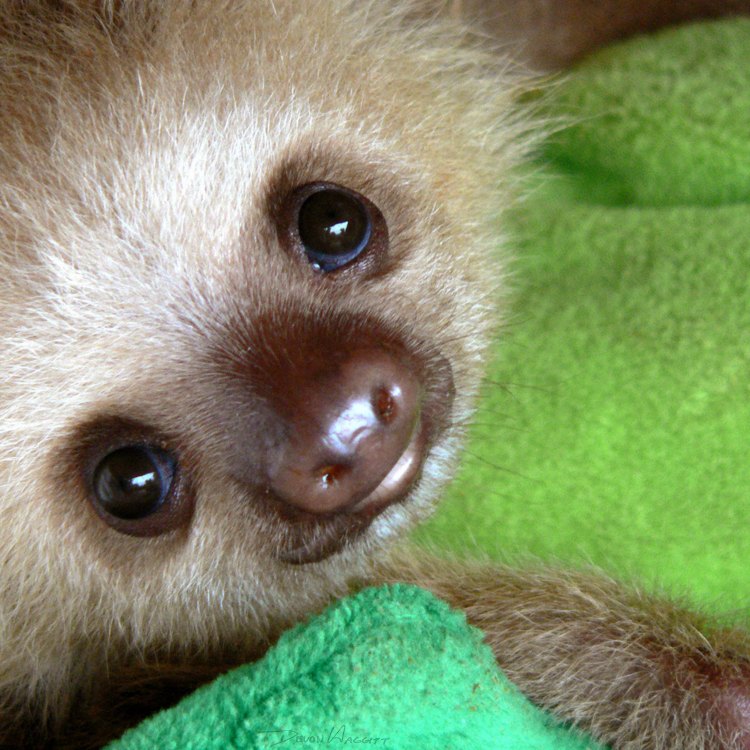
The Slow and Steady Sloth: A Fascinating Creature of the Rainforest
Disclaimer: The content provided is for informational purposes only. We cannot guarantee the accuracy of the information on this page 100%. All information provided here may change without prior notice.

